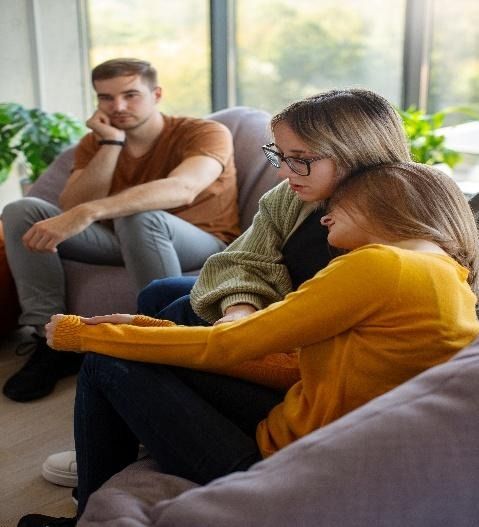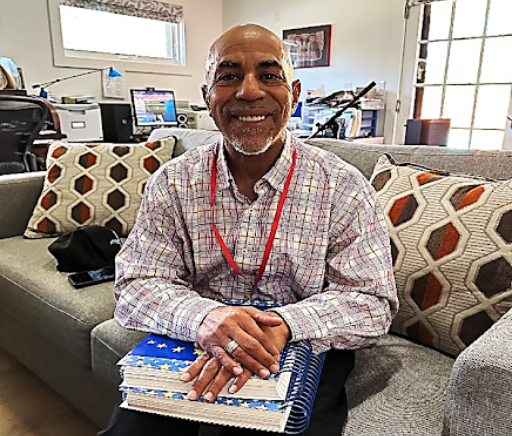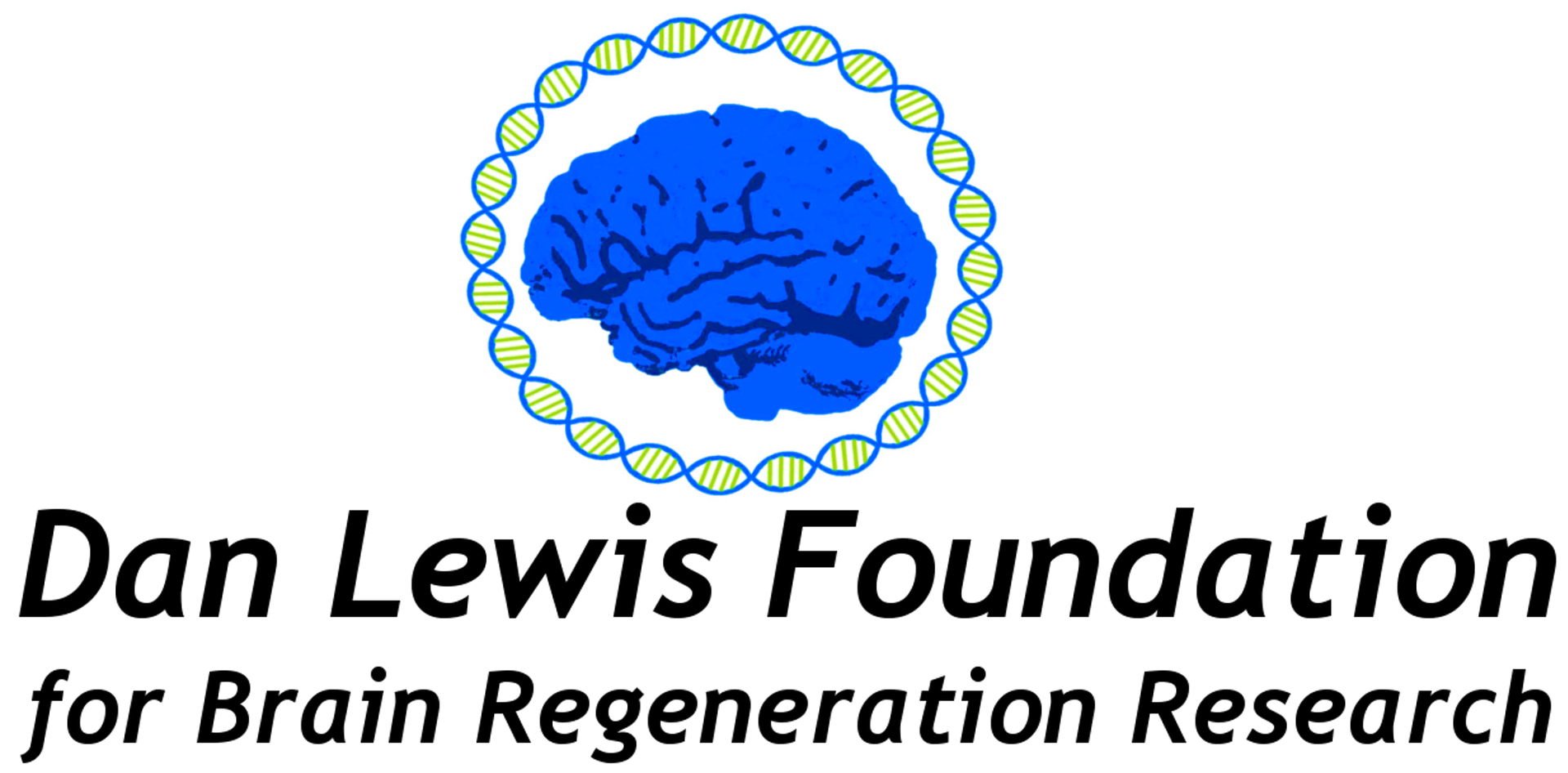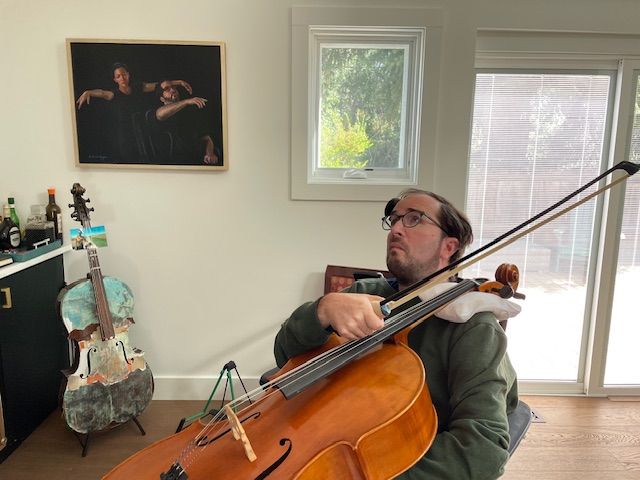The story of Dan’s 2007 accident and severe brain injury was first posted to the DLF website in 2020. You can read “Dan’s Story” here.
Over the past five years, Dan has worked hard to make progress and regain the most basic abilities. He has had to deal with many medical procedures and many challenges. Dan has done so with a calm determination that has helped him move well beyond early predictions of what his long-term status would be.
Progress
Dan’s medical status has greatly stabilized and his general health has been good for a number of years. Seizures that were prolonged, dangerous and often required hospitalization in the several years after his accident are now much less frequent and much more mild. He has not required hospitalization in almost 10 years.
Dan’s receptive language skills have improved noticeably. He demonstrates understanding by following any motor direction (including some multi-step sequences) that he is capable of doing physically. He is more engaged in conversations and responds more quickly to questions. His expressive language has also improved. He now uses personal pronouns. He often uses 2-word phrases and sometimes up to 4-word phrases to respond to questions about preferences and feelings.
Dan’s cognitive status has improved a good deal as well. He is able to count to 100 and to verbally answer simple addition, subtraction and multiplication questions. He understands the idea of “opposites” and seems to enjoy answering the question “What’s the opposite of…..?” to which he usually gets the correct answer.
Dan’s schedule is filled with therapies, activities, and social experiences. He goes swimming once or twice a week, enjoys attending the Colorado Symphony most Saturday evenings, and participates in an integrated dance company called Spoke ‘N’ Motion which rehearses on Sunday afternoons and gives performances several times per year.
Playing the cello remains important to Dan. With assistance, he practices his cello for ½ hour every weekday morning. He is able to bow correctly about half of the songs in Suzuki Cello Book #1 and he enjoys playing scales using different rhythmic patterns.
Challenges
Dan’s responsiveness has improved a good bit but he still has great difficulty initiating actions, intentions, and communication. He can make a choice when several options are presented but he rarely expresses what he wants spontaneously.
It is unclear to what degree Dan experiences emotion. From an outside perspective it appears that he is exceptionally even keeled. He rarely seems to be either happy or sad, but sometimes he demonstrates interest or enjoyment by moving his very expressive eyebrows upward. Observing the relative absence of emotional expression in Dan’s everyday experience is difficult for those who love and care for him, particularly in comparison to the vibrant individual we remember.
Dan continues to have very significant motor planning and motor control difficulties. He has almost no functional movement on the left side. Controlled purposeful movement on the right side shows improvement but he has a way to go.
Dan has what is called cortical visual impairment. This means that while his eyes themselves are not damaged, the vision centers in his brain which process visual input work very poorly. Functionally, this means he doesn’t “see” very much. Moving himself in his power wheelchair has helped to engage his visual system and supported some integration of his vision.
Dan still gets 100% of his water and food via his g-tube. His swallow has been evaluated as inadequate to allow oral feeding. Hopefully, this is something we can work on in the next few years without endangering Dan’s health.
In the first several years after Dan’s accident, family and friends would often ask “Is Dan making progress?” I would imagine Dan at the one yard line of a one hundred yard football field, needing to travel 99 yards to get to the other end zone at the rate of one inch per week to be fully recovered and restored. That’s a long, long journey…but Dan hasn’t stopped moving forward, however gradually.
The DLF is tracking and supporting a growing cadre of researchers in the field of brain regeneration who are capitalizing on stunning biomedical, biotechnological, and bioengineering advances to bring the hope of meaningful brain regeneration into a reality. Although it is unclear whether Dan will be a candidate for emerging brain regeneration methods, it is rather certain that within 5 years, perhaps 10 years at the most, brain regeneration procedures will be effective and increasingly available to people with serious brain injuries. The DLF is proud to play a small part in supporting the important and inexorable movement forward in brain regeneration.






